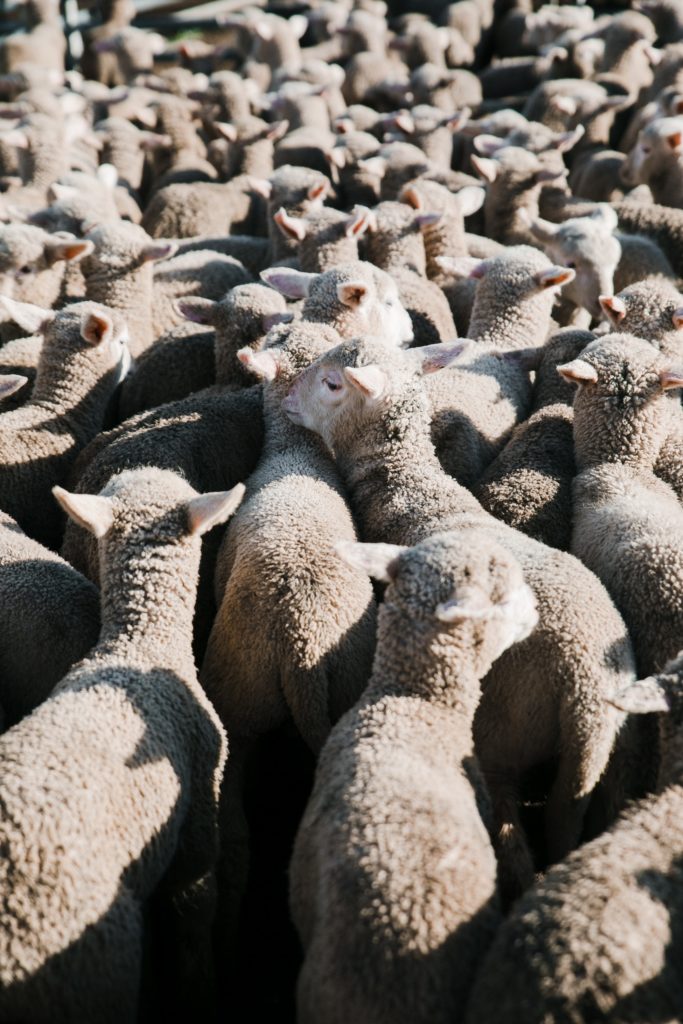A Silent Threat to Sheep Farming
In the quiet fields where flocks graze peacefully, an insidious threat looms – Ovine Progressive Pneumonia (OPP). This slowly progressive viral disease, caused by an ovine lentivirus, poses a significant risk to adult sheep. While many infected sheep may not exhibit clinical signs, the consequences of OPP can be profound, affecting the overall health and productivity of a flock.
Clinical Presentation: Decoding the Signs of OPP
OPP is a cunning adversary, often remaining silent until adult sheep reach two years or older. The initial indicator is a subtle yet pervasive loss of body condition, referred to as “thin ewe syndrome.” Astonishingly, weight loss occurs despite the affected sheep maintaining a normal appetite. Another telltale sign is increased breathing effort at rest, leading to a category of sheep aptly named “lungers.” As OPP progresses, secondary bacterial infections manifest, introducing additional symptoms such as fever, cough, lethargy, and nasal discharge.
https://www.aphis.usda.gov/animal_health/nahms/sheep/downloads/sheep01/Sheep01_is_OPP.pdf
Beyond respiratory distress, OPP can induce a “hard bag,” characterized by an enlarged and firm udder with reduced or no milk flow. The virus’s impact extends further, causing complications such as meningitis and encephalitis. Sheep infected with OPP may exhibit an unsteady gait, twitching, stumbling, and, in severe cases, hind limb or total paralysis. Arthritis may also accompany the infection, causing pain, joint swelling, and a shortened gait.
Remarkably, once infected, sheep remain carriers for life, though not all will show clinical signs. The economic implications for individual flocks, however, remain a topic of ongoing consensus.
Transmission Dynamics: Unraveling the Spread of OPP
Any breed of sheep is susceptible to OPP, and ongoing genetic susceptibility studies are shedding light on breed-specific vulnerabilities. While approximately 10 to 30% of transmission occurs from infected dams to lambs, the majority transpires when young replacement ewes join infected breeding flocks. Contrary to earlier beliefs, it is possible to raise test-negative lambs from infected test-positive ewes, complicating the landscape of transmission dynamics.
Transmission avenues include not only milk and colostrum from infected ewes but also respiratory secretions and the reuse of needles and taggers. The virus, fortunately, does not linger long in the environment.
Control and Eradication Strategies: A Necessary Focus
In the absence of effective treatment or a vaccine for OPP, the emphasis shifts to control and eradication. Acknowledging that eradication is key, as opposed to mere control, is crucial for sustained success. Fortunately, recent insights have shown that eradication can be achieved without resorting to orphan rearing or premature culling of test-positive ewes.
Testing serves as a critical tool in the fight against OPP, with the AGID and ELISA tests being the current options. The ELISA test, known for its sensitivity, is the preferred choice. Sheep owners can opt to draw their own blood or engage veterinarians for testing. Regular monitoring through testing is imperative to minimize the impact of OPP on flock health, reducing the risk of early deaths, poor-performing members, and ewes lambing without sufficient milk for their offspring.
https://dldlabs.com/goat-sheep-services/
Conclusion: Vigilance for a Healthy Flock
As shepherds navigate the challenges posed by OPP, vigilance and proactive measures become paramount. Regular testing, careful monitoring, and strategic management practices can contribute to minimizing the impact of this viral threat on sheep farming. In the pursuit of healthier flocks and sustainable agriculture, understanding and addressing Ovine Progressive Pneumonia emerge as imperative components of responsible sheep husbandry.


